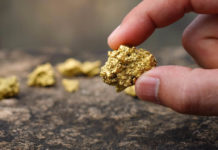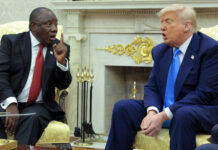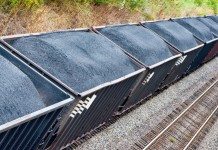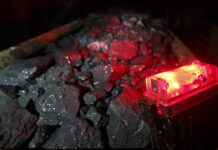
[miningmx.com] — LATEST overview of the uranium market from Australian consultancy Resource Capital Research (RCR) paints a gloomy picture on conditions expected over the next few months.
At the same time a separate report on prospects for TSX and JSE-listed junior miner First Uranium by RBC Capital Markets reckons the latest quarterly results show the company has taken “three steps back’ and is now “against the ropes’.
The combination of falling uranium prices and continued operating problems at First Uranium’s Ezulwini mine has resulted in First Uranium’s share price plunging from a 12-month high of R10.40 to a low of 250c.
The shares currently trade around 300c which compares with a net asset value of US$0.96 (about 683c) according to the latest revised forecast from RBC Capital Markets analyst Leon Esterhuizen.
That’s despite the successful outcome of the technical completion test (TCT) at Mine Waste Solutions (MWS) which avoided payment of a $42m penalty in terms of a gold purchase agreement with royalty company Gold Wheaton.
The main reason for Esterhuizen’s concern is the uncertainty over future gold production from First Uranium’s Ezulwini mine near Randfontein given that gold revenues are crucially important to First Uranium at this stage of the game.
In the June quarterly report First Uranium CEO Deon van der Mescht said the company’s gold production forecast for the current 2012 financial year had been revised to between 70,000oz and 80,000oz from the previous guidance of between 105,000oz and 125,000oz.
Reasons included the “geological complexity of the Upper Elsburg section of the Ezulwini mine ” as well as lack of pre-development in that section which had made production forecasting “unreliable.’
Esterhuizen commented, “this is a significant downgrade and comes only one quarter into the current financial year after the mine plan was revised downwards several times in the past.
“This follows at least three previous iterations to the technical report and mine plan and indicates to us that management still does not have a thorough understanding of this orebody.
“We believe that this is a serious issue as it effectively calls into question the validity of the longer term mine plan on which our (heavily discounted) net asset value is based.’
Esterhuizen has dropped his 2012 production forecasts even further because of the “lack of credibility of the mine plan’ and is looking for gold production from Ezulwini of just 65,100oz compared with 116,400oz previously.
Esterhuizen believes the great danger is that First Uranium could run out of cash unless its operations start to deliver on the promised higher volumes and lower costs.
AngloGold Ashanti recently bought a 20% stake in First Uranium in what CEO Mark Cutifani described at the time as an “opportunistic’ move.
Esterhuizen reckons AngloGold’s interest is focused on the MWS plant near Klerksdorp because it has extensive surface tailings dumps on its own mines close to the plant that could be treated through it.
He suggested MWS could be sold to AngloGold and that would provide enough cash – about $420m – for First Uranium to pay off its remaining debt.
Expectations of further jumps in the gold price could help First Uranium financially if realized but there appears little prospect of help on the uranium price front in the short-term.
RCR pointed out the uranium spot price is back to $48.85/lb matching levels seen immediately after the March nuclear incident at Fukushima .
Expectations are that “the spot market, which had been trading in the range $50-$60/lb, is expected to come under renewed downward pressure in coming months.’
RCR added the spot price could drop to around $45.95/lb “reflecting expectations of potential new supply to enter the market from the fourth quarter of 2011 from producers and funds and uncertainty over the extent of potential Japanese and German utility surplus dispositions’
But the consultancy pointed out the long-term contract uranium price – on which by far the bulk of trade in the commodity is based – had remained relatively stable at around $64.5/lb compared with $73/lb at the end of February.
RCR commented, “despite the on-going short-term market impacts from Fukushima, the long-term uranium market fundamentals are considered sound with expected strong and increasing demand for new nuclear power reactors especially from China, USA, Russia, Ukraine and India.’
The consultancy believed the impact of Fukushima on the uranium contract price would be temporary and the price would remain around the $60 to $75/lb mark.











